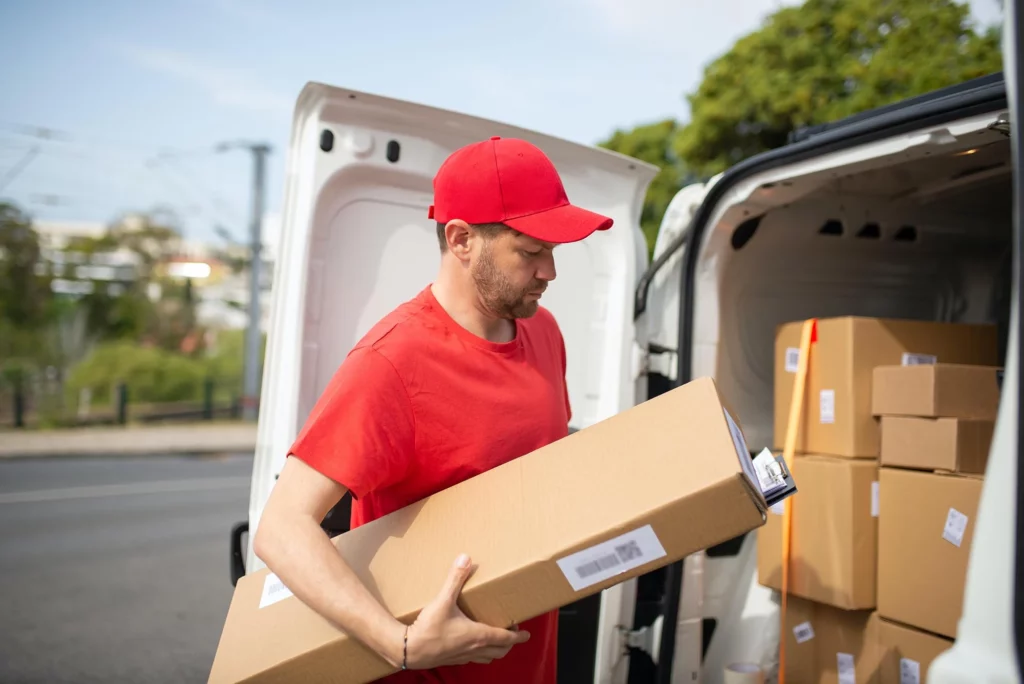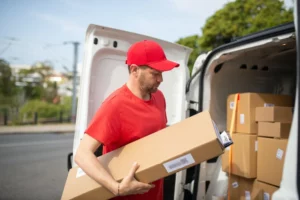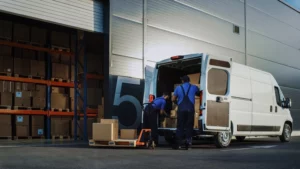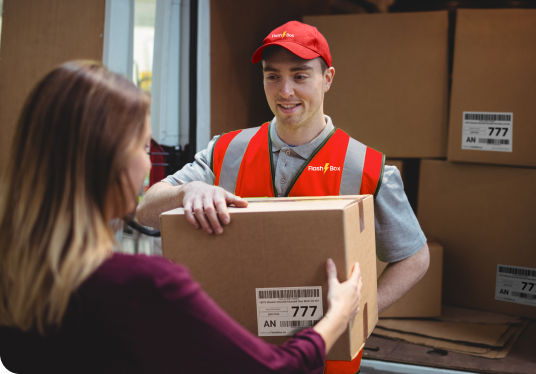A delivery that doesn’t turn out successful is never what we want. As merchants, we all hope to make our customers happy and to face as few challenges along the way as possible. Especially during peak retail season, pleasing customers is more important than ever. Regardless of the reason, a failed delivery means someone along the way ends up being let down. Although some of these reasons are sometimes out of our control, limiting their likelihood is always ideal.
Failed deliveries are parcels that can’t be delivered to their final location. Sometimes failed deliveries are due to an error from someone involved, but other times they naturally occur due to reasons out of control. Whether this is a residential or commercial customer, it can be equally as frustrating. Let’s find out more about what’s causing these failed deliveries and, more importantly, how you can avoid them to achieve satisfied customers.
Why Do Deliveries Fail?
Failed deliveries can occur for a variety of reasons, whether they are caused by the merchant, delivery provider, or even the customer. Especially as orders increase during peak retail season, understanding what can potentially cause failed deliveries is essential. Here are some of the most common reasons deliveries don’t make it successfully to the end customer.
1. Weather Barriers
Unexpected weather conditions can affect the delivery agent and cause failed deliveries. Sometimes, roads are wetter or in worse shape than expected, and the delivery speed is therefore slower. Not all the deliveries that were scheduled to be delivered may actually make it to customers. Similar to this are other natural barriers, like closed roads or vehicle accidents. These are truly out of our control and cannot be planned for.
2. Missed Drop-Offs
If the customer and delivery agent are not coordinated, a missed drop-off might occur. A missed drop-off refers to the customer not being present to collect the parcel. These are most common in cases where signatures or ID verifications are required. Customers have to meet delivery agents for these deliveries to be successful. In these cases, missed drop-offs can be avoided if the right steps are taken by making sure the customer is ready when the agent is.
3. Address Errors
Address errors occur when a customer is completing the purchase of their order. If the address is incomplete or incorrect, the final delivery attempt will not be successful. Most address errors include typos or missed information like an apartment or street number. Without these pieces of information, the delivery can’t be completed. These types of errors can also be avoided by putting the right processes in place.
4. Lost or Misplaced Parcels
The final common reason for failed deliveries is misplaced or lost parcels. In some cases, delivery providers may have a manual system in place to keep track of package movement. This makes it much more likely that parcels will be lost or given to the wrong delivery agent since there is no system to make sure everything is going to the right destination. A lost package obviously cannot be delivered, leading to failed deliveries and frustrated customers. These types of failed deliveries can be the most detrimental to merchants since parcels have to be replaced. This is why working with reliable delivery providers is crucial.
What Impact do Failed Deliveries Have During Peak Retail Season?
Failed deliveries impact everyone involved. Regardless of whether the merchant is directly or indirectly affected, most reasons will cost them something.
Impacts on the Merchant
Failed deliveries significantly impact the merchant in particular. The direct impact is that sellers may have to spend time and money to organize another attempt at delivery, requiring more resources than if it had been successful the first time around. Merchants are impacted indirectly as well. Customers who are unsatisfied with the delivery process are less likely to return in the future or spread positive feedback to other potential buyers. Hence, failed deliveries impact future business on top of the order at hand.
Impacts on the Customer
Customers are also affected by failed deliveries. If the item ordered was time sensitive, they might have been relying on it being delivered when they were expecting it. In other cases, customers have paid for delivery and are upset when it doesn’t arrive on time. They might have to purchase more items to make up for the late delivery. Failed deliveries can taint a customer’s perception of the merchant as a whole. In some cases, it can cause them not to return in the future.
Hence, everyone wants deliveries to run smoothly. The question is, how can we streamline our processes to make sure they do?

How to Avoid Failed Deliveries
Avoiding failed deliveries can be crucial to your success and key to showing your customers that they can trust you. Trust is especially important during peak retail season shopping and can reward you with a significant boost in sales. Here are some of our best tips for maintaining successful deliveries on the first attempt.
1. Always double-check the address
As previously mentioned, incorrect addresses are some of the most common errors leading to failed deliveries. Whether a customer inputs their address incorrectly into your system or you transferred it incorrectly to your delivery provider’s system, the same outcome prevails.
Double-checking the address also means making sure it is complete. Sometimes, customers forget to include details like buzzer codes or unit numbers, slowing down the delivery process. If you can catch these errors earlier, more deliveries can be completed successfully with fewer bumps to sort out in the future.
Our solution to this is using a system that auto-checks all addresses before delivery orders can be placed. These types of systems ensure the address on file matches an actual address within the city you’re trying to deliver to and checks that all information matches the rest as well (like the postal code and street number). This is one effortless way to make sure the address is going to lead the delivery agent to a real place. In addition, you should be checking all fields that need to be filled out are completed. For example, apartment complexes need to a have a unit number. This extra step can save plenty of time in the future.
2. Offer live parcel tracking
Parcel tracking is one easy way to reduce the number of missed drop-offs. Most delivery providers offer wide time frames, often hours long, identifying when a parcel might be delivered. Since most missed drop-offs occur due to an unclear window of delivery, clarifying the drop-off time can reduce these errors.
Our recommendation is to offer modernized tracking options to increase order visibility. Live tracking should begin with real-time notifications letting customers know where parcels are before they are delivered. Notifications telling them when it’s left the merchant’s store, when it’s been handed off to the driver, and when the driver is making their way to their house can give them a much better idea of when they should expect the delivery.
Live parcel tracking can also include a map view of delivery agents as they make their way to the final destination. This helps customers be aware of how close their driver is. In the case of parcels which require signatures or ID verifications, customers can be ready to meet the driver and are therefore much less likely to miss the drop-off time.
Concerning the merchant, live parcel tracking can also help avoid lost parcels. Since live tracking requires a system to keep track of all deliveries, the most common type of system scans packages as they go in and out of warehouses or sorting facilities. Even more advanced techniques will scan parcels before they are handed off to delivery agents, allowing merchants to see exactly where each parcel went. Lost parcels are significantly reduced when systems like this are used to track their movements.
3. Keep communication strong
Some of the most common reasons for failed deliveries are missed drop-offs and address errors. While both of these may seem unavoidable, a clear line of communication between the merchant, delivery provider, and customer can significantly reduce these errors. Peak retail season requires strong communication to make sure the increase in orders can be managed effectively.
Communication between the delivery provider and customer allows both parties to contact each other in case the delivery doesn’t go exactly as planned. Even if there is a change in the expected drop-off time, a road closure, or a missing buzzer code, these can all be solved as long as all parties can communicate with each other. Delivery agents then have the ability to call customers, and vice versa. With everyone able to contact who they need, problems can be solved much faster.
4. Offer multiple communication channels
On top of just offering great communication, more channels of communication will increase delivery success. This means offering more ways for customers to contact you and having as many two-way communication channels as possible.
While some customers prefer calling in for help, others prefer emailing. Some will prefer live chats over either of those. The more, the better. Making it easier for customers to contact you means they’re more likely to reach out and fix a problem. If they notice their address is listed wrong on the delivery confirmation, they can reach out however it is easiest for them to correct it.
Bonus tip: Allowing customers to edit their own addresses before the time of delivery can reduce the number of failed deliveries. Think of this as an extra stream of communication, giving customers the ability to correct an error before you need to reach out to them about it. Modern delivery solutions with great live tracking services offer this!
4. Simplify check-out processes
Our final recommendation for reducing failed deliveries this peak retail season is to simplify your checkout process to limit errors from the very start. Many customers find lengthy checkout processes difficult and hence rush through them to place their orders as quickly as possible. This is where many problems stem from that later lead to failed deliveries.
Most customers agree they’re more likely to work with a merchant that offers a simple checkout process. One of these simplified processes could be address verification (as mentioned before) which allows the customer to start typing their address and click on the complete version once it pops up. This ensures all delivery information is correct and the address doesn’t include any errors. Other checkout options allow customers to input their address and have the other fields filled out automatically for them. All of these steps help verify addresses while also reducing the effort required on the customer’s part.
This simple addition to the user experience can greatly impact customers, making it easier for them to complete their purchase from you. It also helps guarantee the information you pass onto your delivery provider is correct. This helps save you time and money by making first attempts at delivery increasingly successful.
Making the Most of Peak Season Shopping
Overall, steps should always be in place to try and avoid any failed deliveries. Setting up the proper protocols in advance can help you avoid problems instead of cleaning them up later.
We recommend implementing our suggestions into your peak season planning to avoid failed deliveries. Double-checking addresses and other information can avoid issues directly related to drivers. Live tracking options will ensure customers are ready for when the agent arrives. Communication should be accessible to everyone on many different platforms, allowing customers to contact you and also you to contact them. And finally, offering a simple checkout process will keep things clear and stop customers from rushing. These will all help you secure successful deliveries on the first attempt.
If you’re worried about failed deliveries costing you additional time and money, then free re-attempts at delivery for unavoidable issues like the weather might be one way to go. In addition to this, working with a delivery provider who works to prevent errors instead of fixing them afterward can help you complete deliveries successfully the first time around.
Delivering with FlashBox
Looking to boost sales during the peak retail season and avoid failed deliveries? FlashBox has a 99.9% first-attempt success rate because we put all of these practices to use. We take care of your customers to make sure they are well informed of the drop-off before it occurs and that all information for our delivery agents is accurate and complete before the routes begin. Failed deliveries are prevented well in advance thanks to our expert customer support team. We speak directly with your customers to verify addresses, correct address errors, and make sure they’ll be present for signature-required deliveries.
Talk to an expert today to stand out this peak season!
Want to find more ways to make this holiday season a successful one? Follow us on social media for more tips and tricks.





